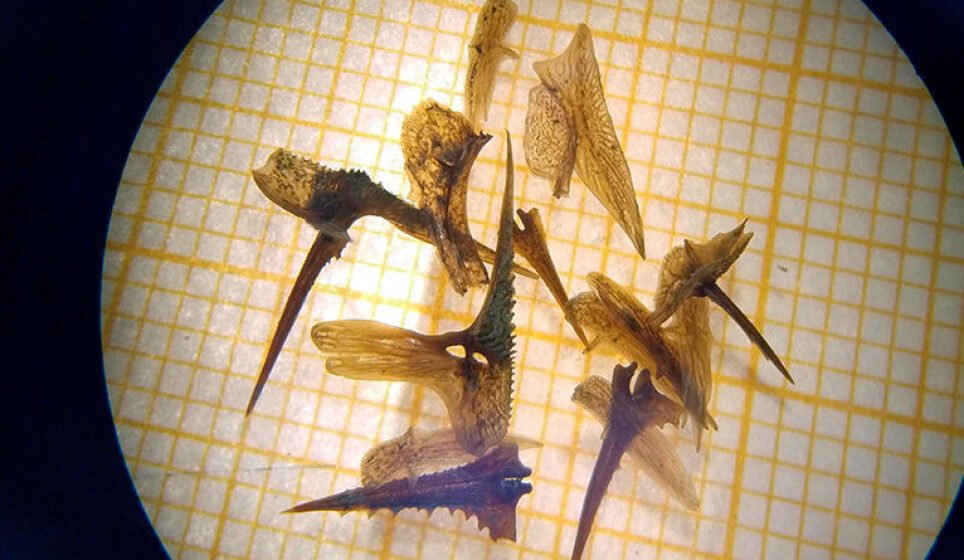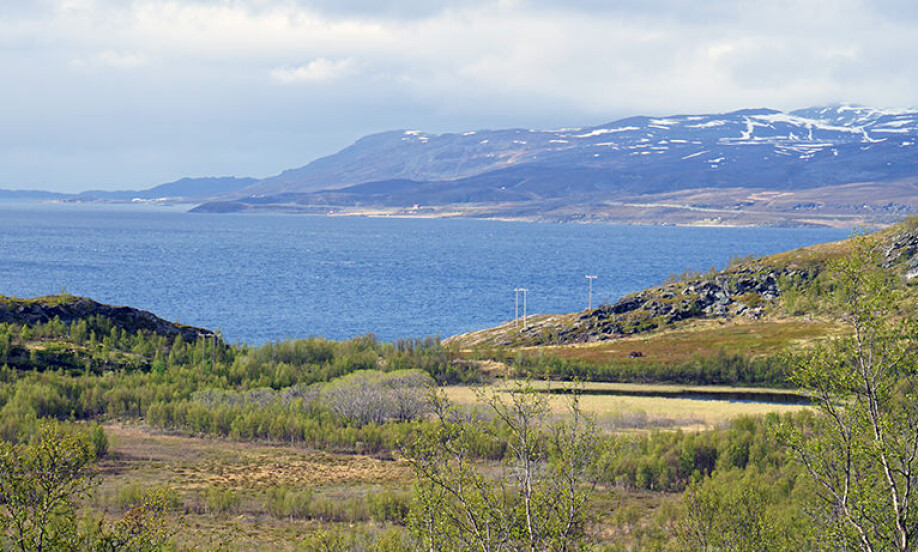THIS ARTICLE/PRESS RELEASE IS PAID FOR AND PRESENTED BY NTNU Norwegian University of Science and Technology - read more

How a small fish coped with being isolated from the sea
A 12 000-year-old stickleback shows how species adapt.
The last ice age ended almost 12 000 years ago. The land rebounded slowly as the weight of the ice disappeared and the land uplift caused many bays to become narrower and form lakes.
Fish became trapped in these lakes.
Saltwater gradually changed to brackish water and later to freshwater. This environmental change naturally led to a total replacement of the animal and plant life.
The exception is the tiny stickleback, which successfully adapted as saltwater became freshwater and can still be found in today’s coastal lakes along the Norwegian coast. How in the world did this little fish manage to adapt to such big changes, even in several places at the same time?
The 12 000-year-old bones of three-spine stickleback can give us some answers.

Changed in several locations at the same time
The three-spine stickleback is found in freshwater lakes, in saltwater marine environments and in brackish water, a mixture of the two. Although the fish belong to the same species, they look a little different depending on where they are found.
Since so many lakes were cut off from the sea, we know that sticklebacks adapted to the environmental changes in multiple places simultaneously. Yet the changes happened independently of each other, without any interbreeding, which pointed to a genetic reason behind the phenomenon.
Three-spine sticklebacks are therefore well suited for the study of what biologists call 'parallel evolution' – evolutionary changes that occur in parallel but independently of one another.
Ancient findings shed light
“Usually we only have access to present-day sticklebacks. We compare groups from freshwater and marine habitats and assume that fish from the sea today are genetically comparable to the marine fish that adapted to freshwater in earlier times,” says Andrew Foote, an associate professor from NTNU University Museum and Bangor University in Wales.
Through some interdisciplinary collaboration, researchers gained access to 12 000-year-old bones from two sticklebacks in today’s Hammerfest municipality.
These ancient artefacts can certainly provide a useful basis for study. But sticklebacks that live in marine environments today have also evolved since those times, so they might not be quite the same as the ones that adapted to freshwater at the end of the ice age. This makes studying them tricky for biologists.
“Although these bones belong to fish that died over ten thousand years ago, when most of Scandinavia was covered by ice, they contain fragments of DNA that we can study. The genes give us insight into the early stages of the transition from saltwater to freshwater,” says Foote.
International cooperation
The results of the international cooperative effort were recently presented in the journal Current Biology. Experts in geology, ancient DNA and genetic evolution collaborated to compare present-day and ancient threespine sticklebacks.
Foote teamed up with professor and geneticist Tom Gilbert from the University of Copenhagen. They had access to a state-of-the-art laboratory for the study of ancient DNA and used newly developed methods to sequence the genomes of the 12 000-year-old sticklebacks.
“Research on threespine sticklebacks over the last 20 years has provided key insights into the genetic basis of parallel adaptation. We’ve found that adaptation can proceed via newly arising mutations, but often involves reusing an already existing genetic variation that spreads among populations,” says Dr. Felicity Jones at the Max Planck Society’s Friedrich Miescher Laboratory in Tübingen, Germany.
Populations are groups of animals of the same species that are geographically more or less separated from other groups of the same species.

Marine fish had the genes for freshwater
“It’s really striking that we could detect variants known to be adaptive to freshwater in one single marine colonizer by overcoming all the challenges related to sequencing ancient DNA. This conclusively demonstrates that freshwater-adaptive genetic variants were present in the stickleback populations that colonized freshwater lakes from the sea thousands of years ago,” says doctoral student and lead author Melanie Kirch, who is also from the Friedrich Miescher laboratory.
This proves that gene variants that enable sticklebacks to live in freshwater already existed in stickleback populations in the ocean several thousand years ago. These marine fish could thus colonize the freshwater lakes that arose.
But Kirch also points out that the results show that parallel evolution has some limitations. “Even when the colonizing ancestor carried genetic variants known to be adaptive in freshwater, these variants aren’t always present in the contemporary population. This tells us that even beneficial freshwater-adaptive variants can be lost during the evolutionary process of adaptation, likely by random chance – a process known as ‘genetic drift,’” she says.
A window into the past
This ancient DNA has provided a window into the past and has enabled researchers to study the genetic makeup of the ancestors of today’s fish. Researchers can thus track adaptations that have taken place over several thousand years that also help them understand more of the evolutionary process.
In this way, they can create better models and gain new insight into factors that affect the direction, speed and molecular basis behind evolution in nature.
Studied the land uplift
The sticklebacks were found by Norwegian geologists who actually studied the land uplift that has taken place along the Norwegian coastline since the ice retreated from Scandinavia.
Geologists stumbled across the fish bones in several sediment samples taken from lakes along the coast. Sediments are materials that sink to the lake bottom over the years and are deposited in layers according to age, unless someone or something disturbs the order of the layers. In the more or less untouched lakes studied, the sediment layers show traces of the transition from a marine environment to a freshwater environment.
Carbon dating can help geologists reconstruct how sea levels have changed over time, but this time the technique was also useful in another way.
“The fish bones we washed out of the sediment samples were amazingly well preserved. We could immediately identify them as originating from threespine sticklebacks,” says researcher Anders Romundset at the Norwegian Geological Survey.
They determined the age by carbon dating plant material that was found in the same layers as the bones. The analysis also showed that these particular fish had lived in brackish water, which indicates that the lake was close to becoming disconnected from the sea.
Since the bones were found in a transition period between marine and freshwater habitat, the genes showed both genetic variations associated with an adaptation to the sea, as well as some genes that clearly showed an adaptation to freshwater.
Reference:
Melanie Kirch et.al.: Ancient and modern stickleback genomes reveal the demographic constrains on adaptation. Current Biology, 2021.
See more content from NTNU:
-
One in ten boys become addicted to gaming
-
Are you more jealous of emotional or sexual infidelity?
-
More than 120,000 Norwegians suffer from work-related anxiety
-
Forever chemicals affect ducklings' genes while they are still in the egg
-
Why are pregnant women in Norway so worried?
-
Politics on Facebook: Populist parties choose divisive issues on purpose





































